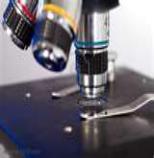Dawn R. Meyer Bio Please Click Here Charles E. Gilbert, Ph.D., M.S. Epidemiology and Toxicology Institute, LLC Charles E. Gilbert, Ph.D., M.S. Epidemiology and Toxicology Institute, LLC, New York 11788 Charles E. Gilbert is an epidemiologist and toxicologist with expertise in occupational and environmental health especially in sensitive groups such as children. Dr. Gilbert was appointed lead scientist for the Ebola Task Force, and he was appointed lead scientist for infectious diseases for the Suffolk County Division of Emergency Medical Services, Dept. of Health Services. Dr. Gilbert is a founding and Charter Member of the Environmental Biology and Public Health Section in Amer. Assoc. of Bioanalysts. He is a member of ASTM’s Committee on Sampling and Analysis of Atmospheres, Subcommittees on Indoor Air and Indoor Biocontaminant Investigations, Committee E35 on Pesticides, Antimicrobials, and Alternative Control Agents, and Committee E54 on Homeland Security Applications. He is a member of ASTM Committee D22.09, US Technical Advisory Group through ANSI for the International Standards Organization Committee TC 146 on Air Quality. Dr. Gilbert was a member of U.S EPA National Exposure Research Laboratory’s, Scientific Peer Review Committee on quantitative PCR for mold species, Environmental Relative Moldiness Index and relationship between mold and childhood asthma. He is a Medical Advisory Committee member of New York City Coalition to End Lead Poisoning. He was a member of the New York Assembly’s Advisory Group on Brownfield Cleanup Standards. Dr. Gilbert is a member of the Suffolk County Medical Reserve Corps part of the U.S. Surgeon General’s office. He was a Research Asst Professor Dept. of Biostatistics and Epidemiology, School of Public Health, Univ. of Massachusetts, Amherst. Dr. Gilbert has conducted biological, chemical, and physical contaminant indoor environmental evaluations in more than 600 schools, hospitals, private and public buildings. He has provided direction in the biological, chemical, and physical contaminant remediation of over 500 schools, hospitals, and other buildings. He has investigated and prescribed management for disease outbreaks and indoor environmental concerns in operating rooms, intensive care units, cardiac care units, pediatric intensive care units, post operative care units, preoperative care units and other patient care areas in more than twenty hospitals and health care facilities. He has conducted evaluations and directed remediation in buildings following natural and manmade disasters. He has been invited to speak at numerous national and international conferences on biological, chemical, and physical contaminants. Dr. Gilbert has been on expert, technical, scientific, and medical advisory committees for the Dept of HUD, EPA, CDC, DoD, U.S. Agency for Toxic Substances and Disease Registry, Alliance to End Childhood Lead Poisoning, and National Center for Lead Safe Housing, and other industry, and academic institutions. He developed and was Director of the Northeast Regional Lead Training Center, one of US EPA 6 centers. Dr. Gilbert has taught over 7,500 students in hazardous substances, aspects of disasters such as hurricanes, floods, fires, explosives, structural collapse, and biological and chemical weapons, and hazardous waste operations and emergency response, confined space, specific chemicals, infectious diseases, active shooter incidents, blood borne pathogens, emergency medical services and other environmental health and occupational health subjects. Dr. Gilbert has written risk assessments for more than 200 chemicals, biological, and physical agents. He has presented at more than 400 conferences and courses. He has published more than 25 peer reviewed papers and chapters. Areas of research included: Indoor environmental exposure and health surveys of persons in schools, hospitals, and other buildings; review of the health effect basis for drinking water standards for organic and inorganic compounds; evaluating the impact of chemical exposure in health outcomes of workers, medical waste, health based criteria for domestic waste and hazardous waste facilities, use of indicator compounds to determine human exposure to number 2 fuel oil, the pesticides, VOC exposure during bathing, and acceptable levels for numerous chemicals including, petroleum, pesticides, anesthetics,medicines, and industrial chemicals. He provided environmental and occupational health services to numerousfinancial institutions and agencies after Hurricanes Katrina, Sandy, and the World Trade Center Tragedy in the Fallof 2001. He was invited to conferences to present this work at Ground Zero. He was appointed lead scientist for theEbola Task Force, Suffolk County Division of Emergency Medical Services, Dept. of Health Services. Dr Gilberthas taught more than 500 emergency medicine services, fire fighters and police responders on Ebola epidemiology,pathophysiology, clinical manifestations and appropriate dressing and undressing in personal protective equipmentthrough Suffolk County EMS Dept. of Public Health. In February 2015 he was appointed lead Scientist forinfectious diseases for the Suffolk County Emergency Medical Services Dept. of Public Health. |
| Areas of Expertise * environmental expert for home, schools, buildings, workplace, farms and agriculture, green houses, hot houses, shipping and containers, ships and vessels Epidemiology Toxicology Industrial Hygiene Risk Assessment Risk Management Risk Communication Public Health EducationIndoor Environmental Quality HVAC Biological: Mould, Bacteria, Allergens, Parasites, Insects Chemicals: asbestos, lead, mercury etc. Physical Agents: Dust, electromagnetic fields, radiation Emergency response services, natural and man made catastrophes Forensic Evaluation *Expert testimony and consultation Building evaluations: Building damage, water damage, water tracking, and water mapping Residential / Home Services evaluations |


| Mission Statement The mission of the Epidemiology and Toxicology Institute is to promote, protect and preserve our clients' health and resources. We use these methods to prevent illness. The disciplines of epidemiology and toxicology are applied to identify people at risk and promote actions to protect them. |
| Environmental Expert for Homes, Buildings, Schools, and Workplace |

| Epidemiology and Toxicology Institute, LLC |

Critical Incident Stress Management Course